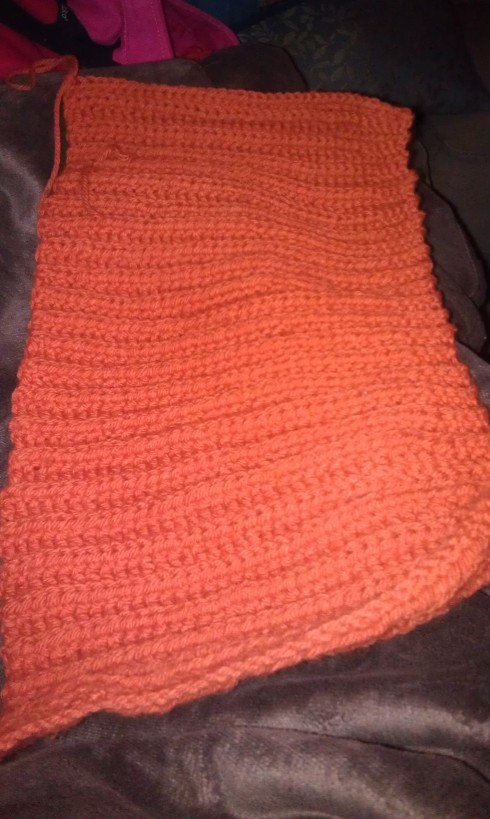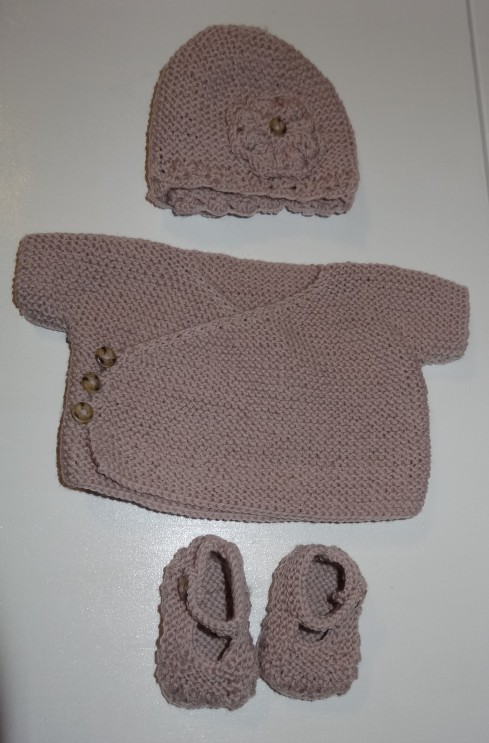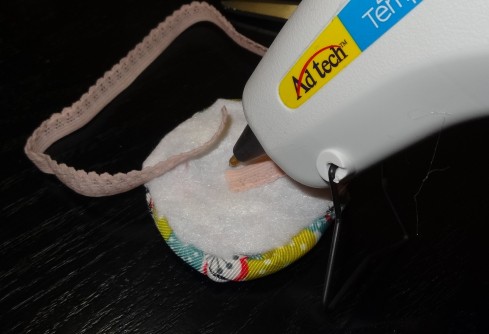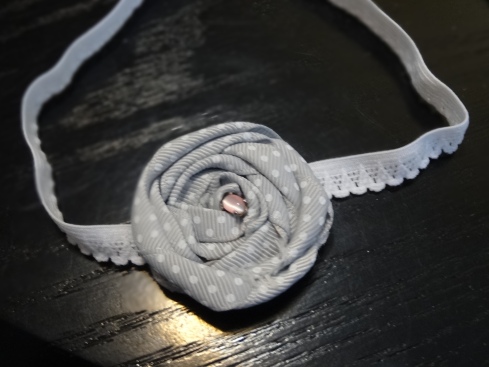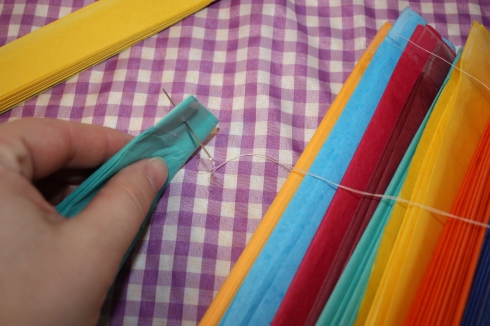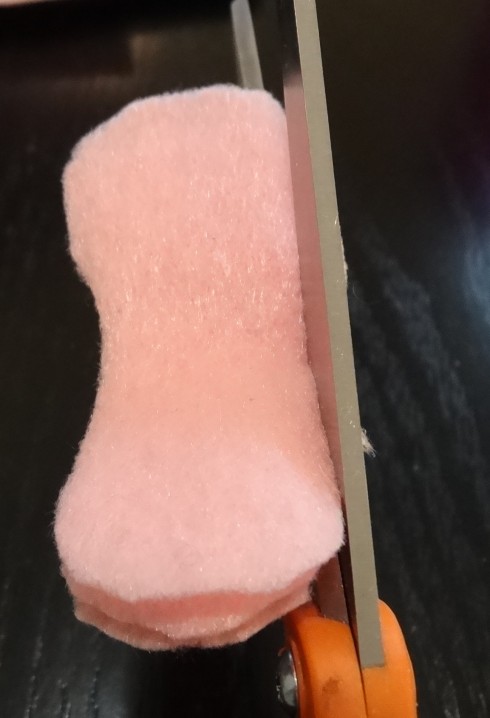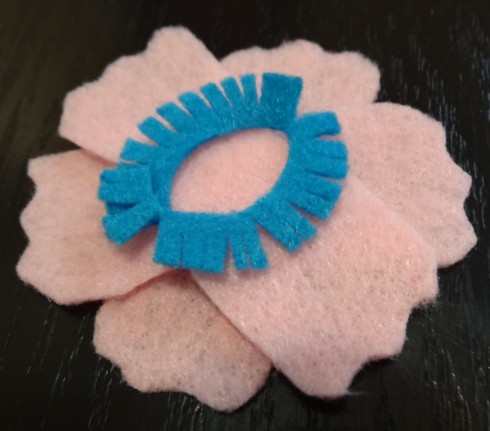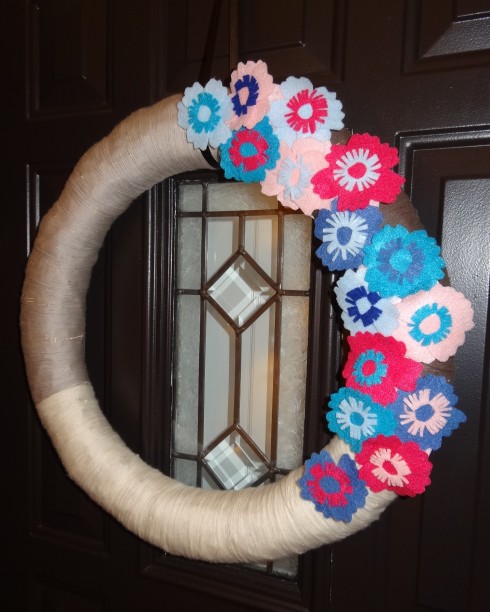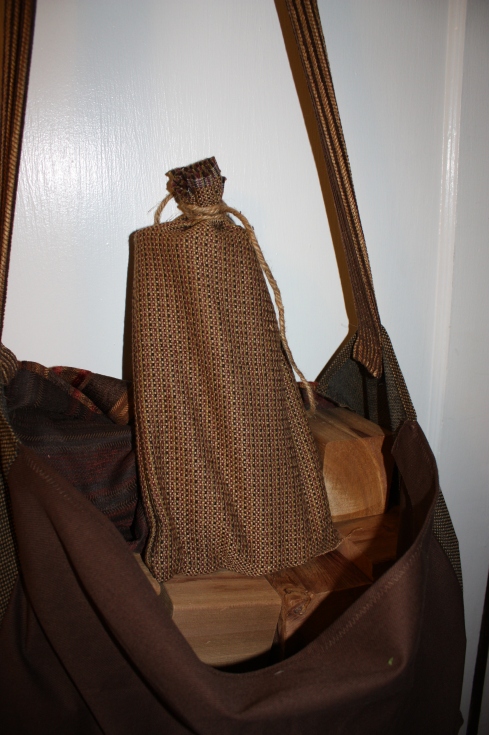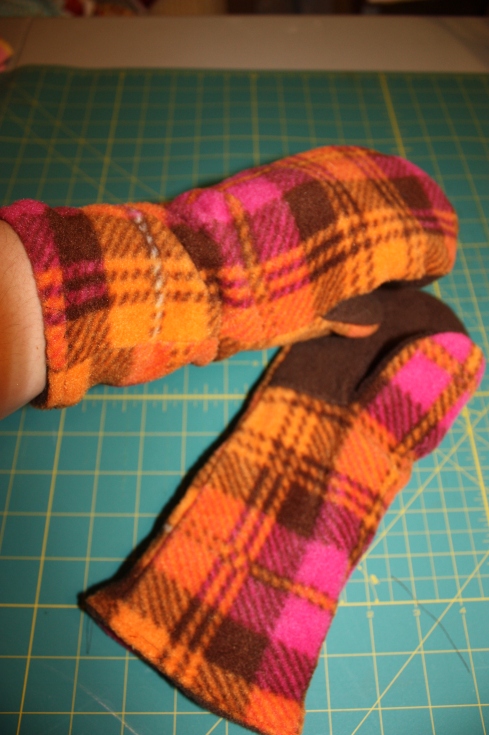A long while ago I picked up a wooden black TV tray at the Salvation Army for $4. I had been pondering a way to be able to sew and press seams easily without having a huge ironing board cluttering up my space. This TV tray would become the answer. For several years I used a pillowcase on top of the tv tray and it functioned fairly well as a small space to press seams. I could use this to press in front of the television or next to my sewing space (which I will show you one day when it doesn’t look like a tornado has been through the area!). However, the pillowcase would often slip off so I was looking for a permanent solution. Finally I would make an ironing cover to work the way I wanted! I started with some scrap batting and some fabric that I rescued from a bin of fabric my mom was donating to the quilt makers at her church. I measured across the top of the tv tray and underneath on both sides. I did this both directions. Take it from me and do this twice and remember to add in room for a seam allowance- about a half an inch on each side.
I then sandwiched some leftover batting in between the two pieces of fabric. Pinned it all the way around and sewed a seam about 2 inches in on each side creating a box. To make sure the the batting wouldn’t shift, I also sewed across the center.
 I then folded in the edges to create a nice edge and sewed the edges around the perimeter, save a one inch opening. Through this I threaded a thin piece of ribbon connected to a safety pin. This would form a drawstring to tighten the bottom of the cover. FAIL! It was at this point I realized I had measured incorrectly. The fabric was too short lenghwise! I also discovered that I needed to create a smaller space for the drawstring to be threaded through- it wasn’t cinching around the sides of the table- it was cinching on top.
I then folded in the edges to create a nice edge and sewed the edges around the perimeter, save a one inch opening. Through this I threaded a thin piece of ribbon connected to a safety pin. This would form a drawstring to tighten the bottom of the cover. FAIL! It was at this point I realized I had measured incorrectly. The fabric was too short lenghwise! I also discovered that I needed to create a smaller space for the drawstring to be threaded through- it wasn’t cinching around the sides of the table- it was cinching on top.
 So I ripped out the seams I made on the edge. I unfolded the amount I had sewn under. I then sewed along the rough edge around the perimeter save the one inch space. I sewed a complete square inside this seam about a 1/2 inch to 3/4 inch wide. This would become the new space through which I would run the ribbon as described above. You can see the two seams in the photo above.
So I ripped out the seams I made on the edge. I unfolded the amount I had sewn under. I then sewed along the rough edge around the perimeter save the one inch space. I sewed a complete square inside this seam about a 1/2 inch to 3/4 inch wide. This would become the new space through which I would run the ribbon as described above. You can see the two seams in the photo above.
I once again threaded the ribbon through the gap in the outer circle and through the small space I had left for it. I set the cover on the table and cinched the ribbon tight. It worked! I tied a knot with the ribbon to keep the fabric stretched taut. Viola! A handy tool for next to your sewing machine or your sofa!









